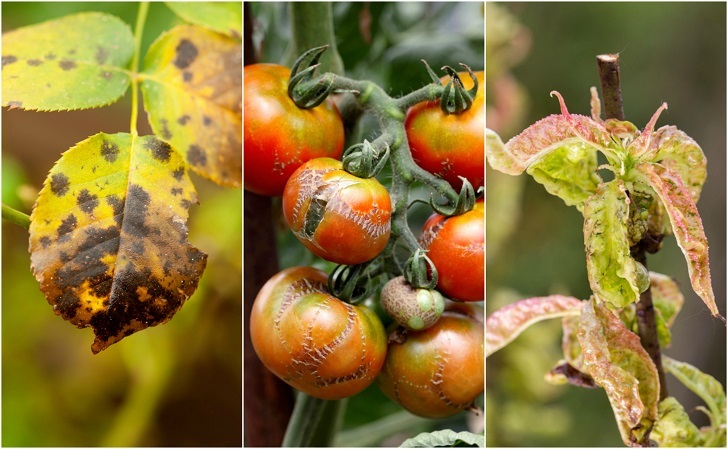
It can be absolutely heartbreaking to see your favorite plant or plants, start to fade away from one disease or another.
There are a number of different plant diseases that can occur, which happens when an organism infects a plant and disrupts its normal growth habits.
It can cause anything from slight yellowing to death.
Disease fungi take their energy from the plants on which they live. They are responsible for a significant amount of damage and can be characterized by problems like wilting, scabs, moldy coatings, rusts, blotches and rotted tissue.
About 85% of all plant diseases are caused by fungi, according to the University of Florida, which means you’re more likely to encounter fungal diseases than any other type of disease.
This list of common plant diseases to look out for can help you quickly diagnose when there’s an issue, and keep your plants thriving and looking fresh.
The next time you notice something strange going on with yours, you’ll know just what to do.
1. Blight
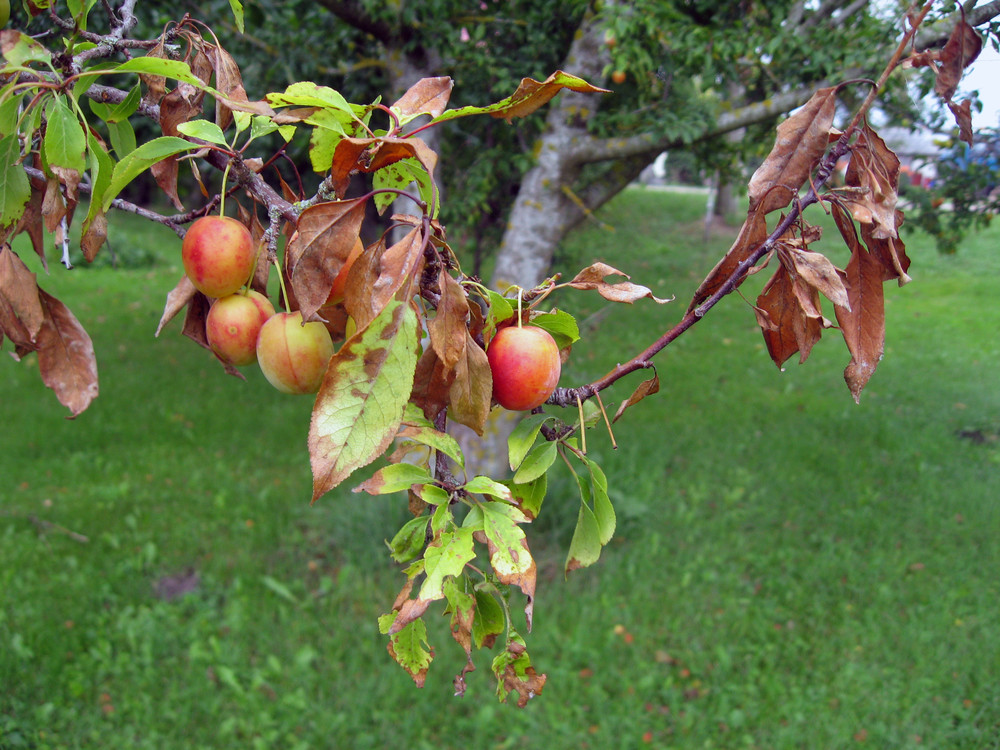
There are actually several types of blight to watch out for: fire blight, early blight and late blight, all of which are easily recognizable as it often causes the sudden death of all plant tissue, including the flowers, stems and leaves.
Fire blight. Fire blight is a bacterial disease that affects apples, pears, fruit trees, roses, and small fruits. When shoots are affected, they’ll look blackened.
You may notice lesions on the branches and limbs that ooze an orangish-brown liquid on very warm days.
Treat fire blight as soon as possible after you notice it, otherwise, it can spread quickly to the entire fruit tree and kill it.
To do so, first put on gloves to protect your hands, and then add four cups of water to a large bowl. Add one cup of bleach, pouring it in slowly so that it doesn’t splash out. Stir it up with a spoon.
Before treating your plant, prune all the affected branches using shears.
Dip the shears in the bleach solution after each cut so that you don’t spread the infection.
Cut off all branches at least 12 inches below the last branch that is wilted and discolored, and then dispose of them in a place that’s at least 100 feet away from your tree.
Pour six cups of water into a one-gallon garden sprayer, and then add four cups of white vinegar. Close the lid tightly and then shake the sprayer to mix the contents.
Put on safety glasses and then pump the handle on the sprayer to pressurize the solution.
Point the nozzle at your tree and spray it from bottom to top, also making sure you get under the leaves.
Step back, and spray it again, this time from top to bottom, until the leaves are saturated and dripping. Now thoroughly spray the tree trunk.
Repeat the process in two weeks to ensure the fire blight is eradicated.
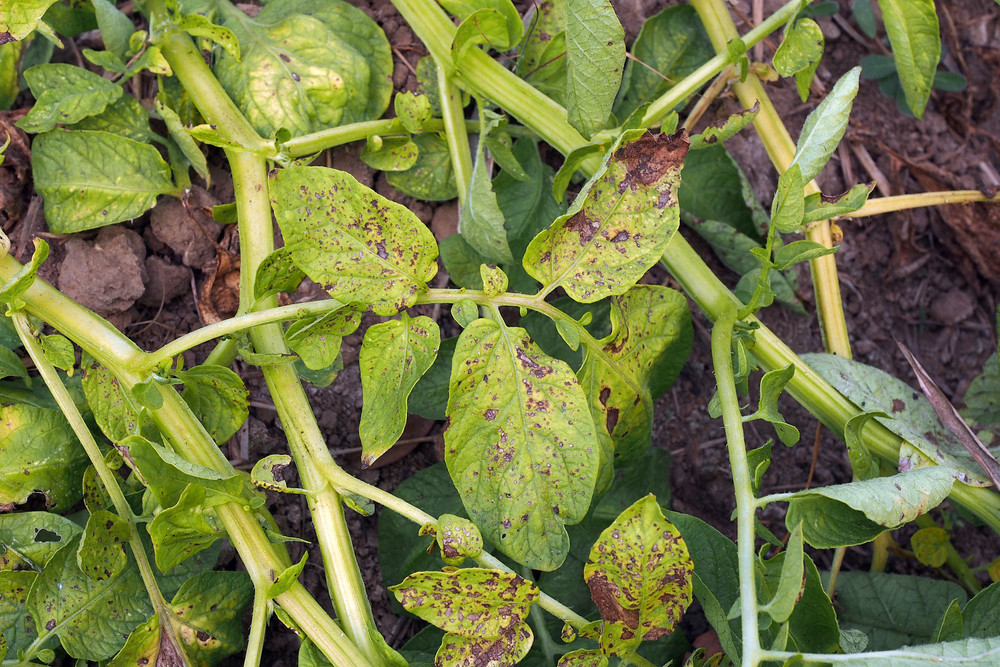
Early blight. Fungal blight can infect plants, vegetables, shade trees and fruit trees, but when it strikes tomatoes, peppers or potatoes, it’s referred to as early blight.
Symptoms include brown to black colored spots on leaves which develop concentric rings. When they’re heavily blighted, the leaves dry up and die as the spots grow together.
You’ll likely notice symptoms on lower leaves first. Potato tubers develop sunken, dark spots.
In spite of its name, early blight can occur anytime throughout the growing season, with high temperatures and wet, humid conditions, causing it to spread rapidly.
Like with most pests and diseases, plants which are stressed or just in plain poor health are more susceptible.
Prevention is key when it comes to early blight.
It’s best to dispose of plants that are infected and use a three-year rotation when possible.
Be sure that you purchase your starts and seeds from a trusted source, and make sure you allow enough space between your plants for air to circulate.
During wet weather, check your plants frequently.
If you see anything that remotely looks like a sign of blight, you can use an organic copper spray, which is considered safe, although you should spray early in the morning to avoid harming bees.
Copper can also build up in the soil and cause toxicity, so if you plan to add more plants, you may want to choose another area.
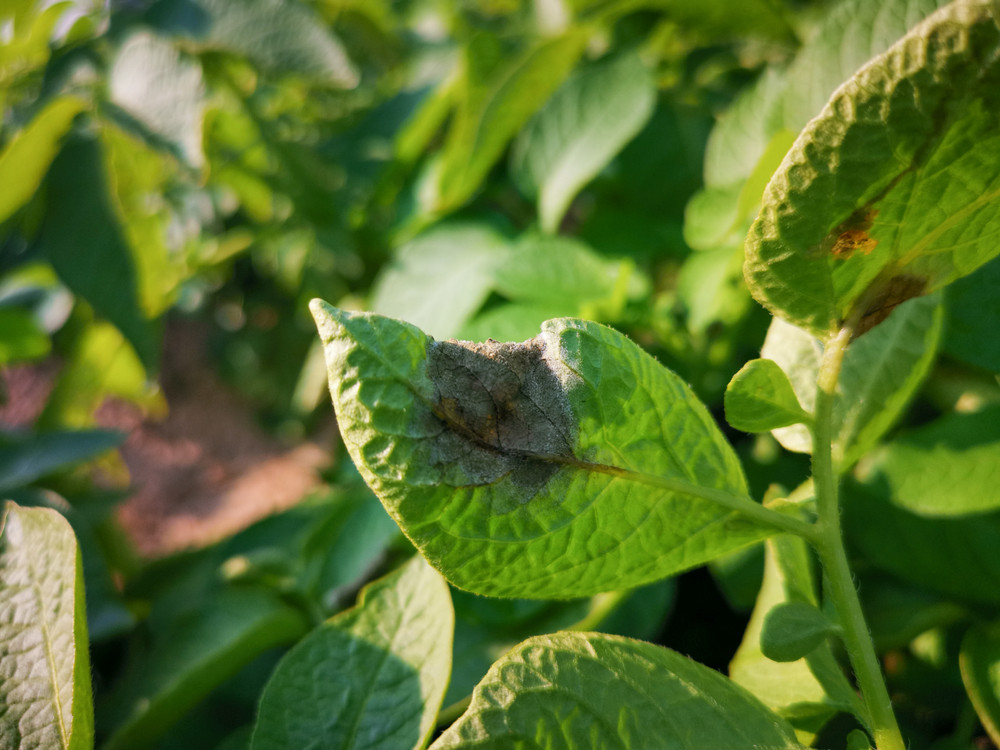
Late blight. Late blight can infect flowers like azaleas, holly, lilacs and rhododendrons, causing dieback of shoots and stem cankers. It can also infect tomatoes, potatoes, and peppers.
Initial symptoms include water-soaked spots on lower leaves, which gradually enlarge and are mirrored on the undersurface of the leaf with a white downy growth.
On potatoes, dark-colored blotches penetrate the flesh. They may look like sunken lesions. During a wet season, the affected plant will rot and die.
Again, prevention is key.
Use trellis and plant supports to keep branches off the ground, and use plenty of mulch.
Avoid watering your plants from above, and water in the early morning hours so that they’ll be dry by nightfall.
If blight does show up, you’ll have to pull out all infected plants and place then into a trash bag – never compost them as it can cause this highly contagious disease to spread quickly, sometimes even affecting the neighbors’ plants.
2. Cankers
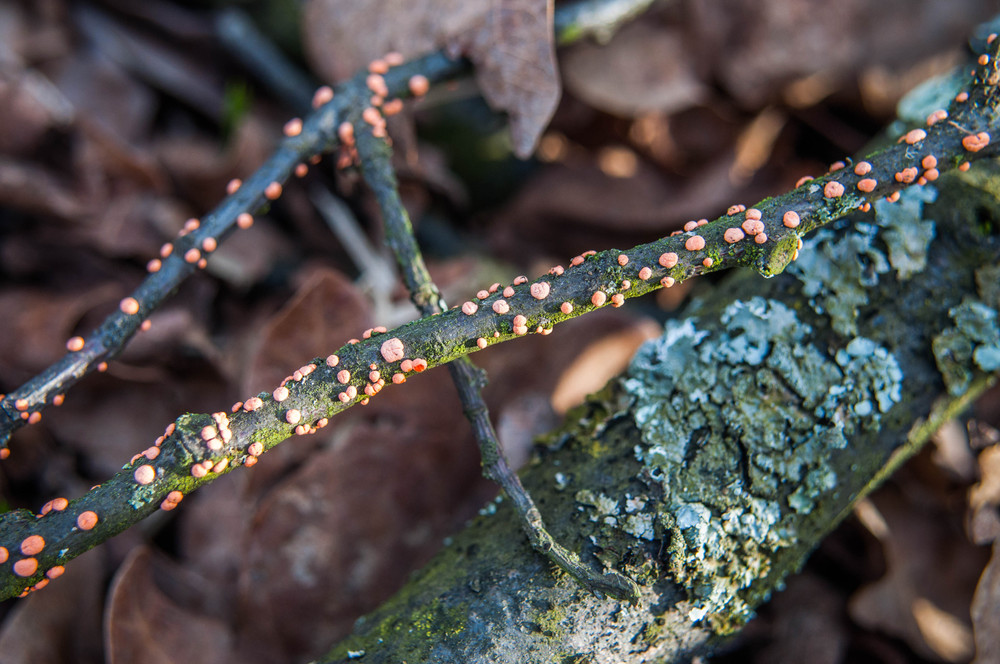
Cankers are identified by dead areas on a plant’s stem that are often discolored. They usually form on woody stems, and can be sunken areas, cracks or raised areas of abnormal or dead tissue.
They may ooze or girdle trunks or shoots, which can cause everything to die.
Cytospora cankers are a fungal disease that can affect stone fruits, spruces and popular, normally developing as discolored circular areas on the bark.
Nectria cankers can attack most hardwoods and some shrubs and vines, though it’s most damaging to maple trees.
You’ll noticed small, sunken areas that appear on the bark next to wounds, along with small pink spore-producing structures. It will kill branches and twigs, and can girdle young trees.
To control it, remove diseased branches and limit pruning cuts.
3. Rusts
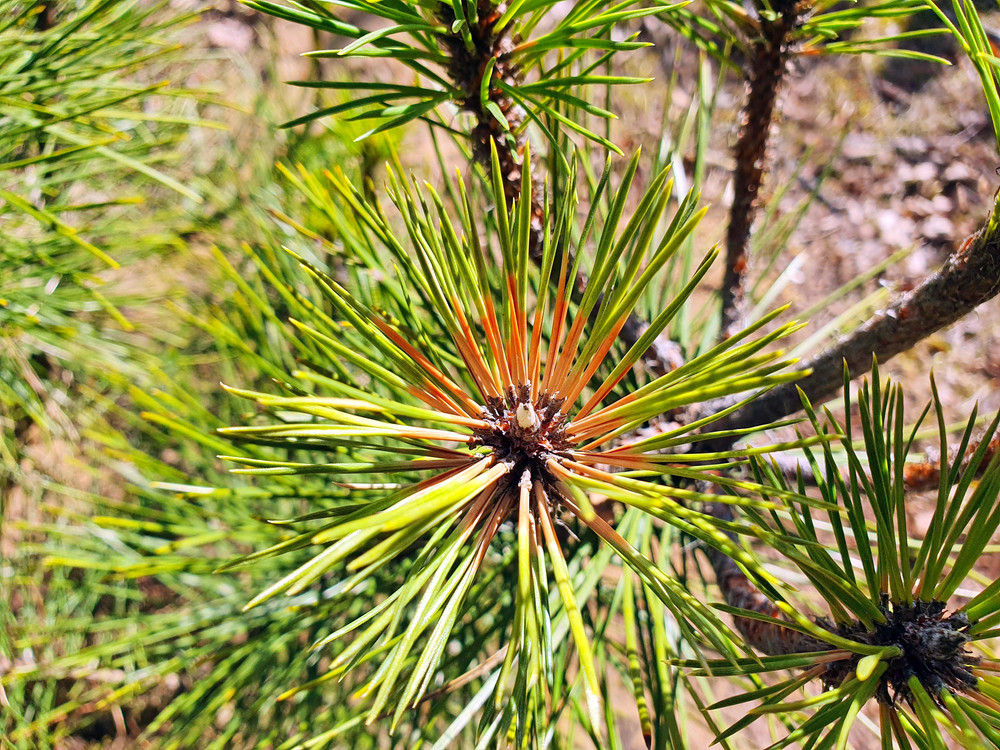
Rusts are another type of fungal disease, and many need two different plant species to use as hosts in order to complete their life cycle.
Typical symptoms are a light tan to rust-hued coating, that often first appears on small twigs and needles. To control, it’s important to give your plants space for air circulation.
Applying neem oil can also help prevent it as it kills spores on the leaves.
If it does develop, remove any infected plants and burn them when autumn arrives.
With other types of rust, such as white pine blister, wheat, and cedar-apple rust, they require another host, so removing alternate hosts can control an outbreak.
For example, wheat rust needs barberry, white pine blister requires a susceptible member of the currant family and cedar-apple needs both an apple and a juniper relative.
4. Wilts
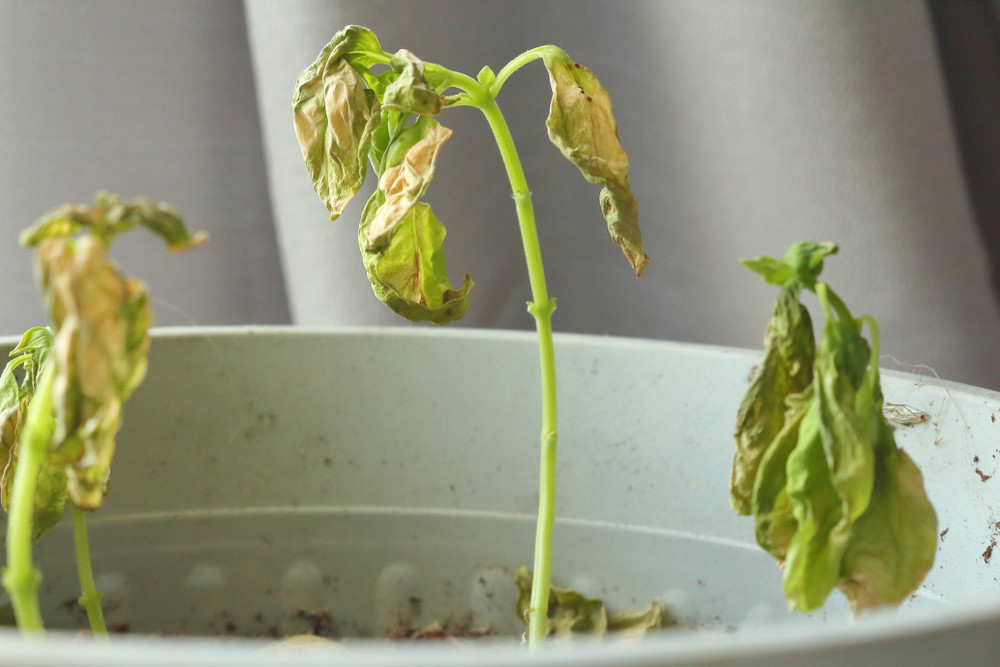
You probably already know that when your plants don’t get enough water, they wilt. But if fungi or bacteria strikes, they can cause permanent wilting that is eventually followed by the death of the plant.
A verticillium wilt is a fungal disease that can attack many different types of vegetables, fruits, ornamentals, and flowers, causing plants to wilt and possibly turn yellow.
It invades susceptible plants through their roots and spreads through the plant’s vascular system, causing them to eventually die.
Unfortunately, it cannot be cured once it’s entered the plant, so it’s best to remove and destroy affected plants.
If, however, only a branch is affected, you may be able to stop it by cutting out well below the symptoms.
Keep in mind that the disease also remains in the soil after removal, so it’s important not to plant another susceptible species in that area.
Another, less-common, type of wilt is a bacterial disease known as Stewart’s Wilt. This is a serious disease that is widespread on sweet corn grown in the eastern U.S. and Canada.
Symptoms include bleached or yellow leaf streaks, internal vascular discoloration, and crown decay. Bacterial slime will ooze out if the stalks or leaves when cut.
The plants will eventually die or be sufficiently stunted that no ears are produced. To control, it’s best to plant resistant cultivars and eliminate flea beetles, but you will need to destroy any infected plants.
5. Club root
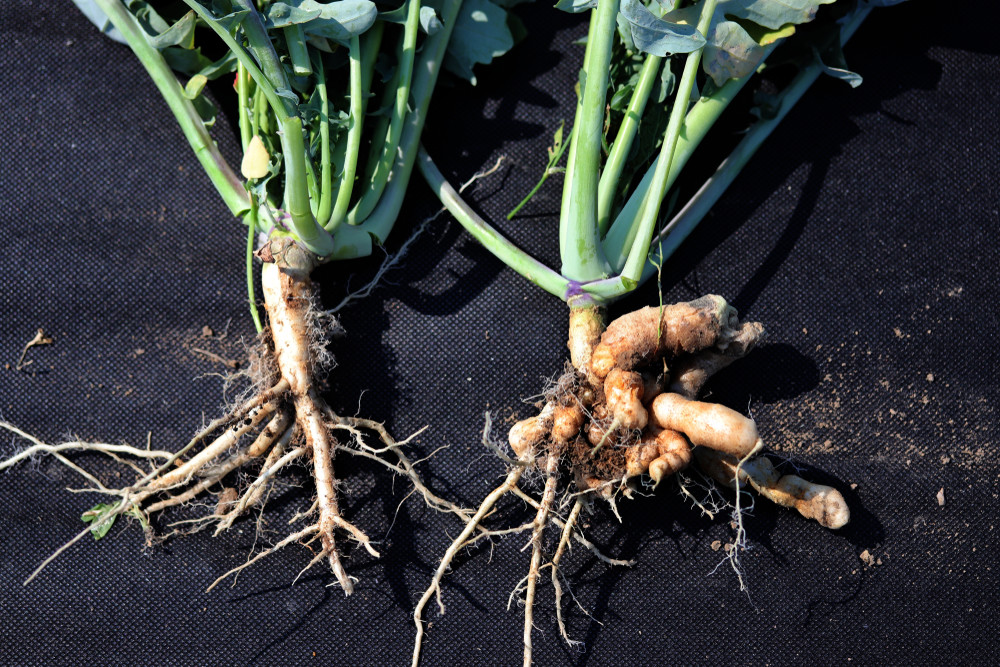
Club root tends to affect flowers and vegetables that are in the cabbage family.
If your plants are infected by this fungus, they’ll typically wilt during the day and become revived again at night, any older yellow leaves will drop off.
The roots are often swollen or distorted. Club root will reduce yields and can cause plants to die.
Prevent its occurrence by keeping your garden clean and rotating crops as well as controlling susceptible weeds like shepherd’s purse and mustard.
If you have infected plants, carefully remove them and sterilize all garden tools using one-part bleach and four-parts water.
If you have a problem or have had problems in the past with club root, adjust your soil pH to a more alkaline 7.2, or at least a 6.8, before planting any new susceptible crops.
The disease spores can persist in the soil for as long as 20 years, so you may also want to solarize your soil.
6. Leaf curl & leaf blister
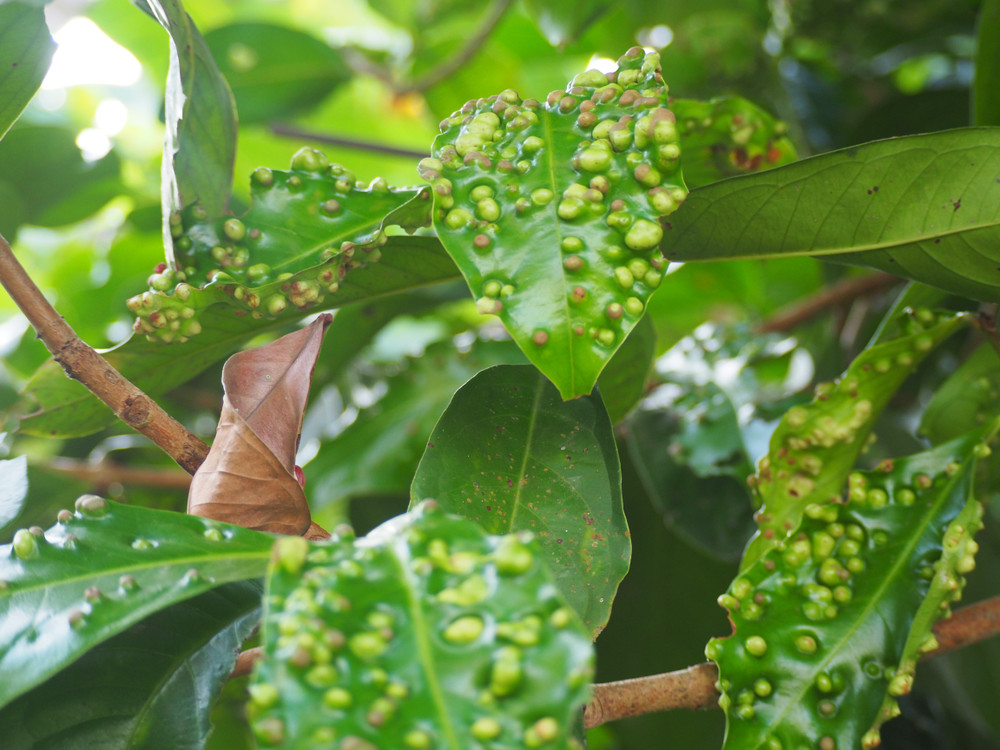
These fungal diseases cause distorted, curled leaves on many trees.
There are many different types of these diseases, for instance, peach leaf curl can attack almonds and peaches, you see that new leaves are pale, and the midrib doesn’t grow along with the leaves, which causes them to curl and pucker as they expand.
The fruit is also damaged, and if it’s a bad case, peach leaf curl can kill the tree.
Oak leaf blister can kill oak trees – the blisters appear as yellow bumps on the upper surface of the leaves and gray depressions on the lower surface.
With either disease, you can control them using a dormant oil spray, which is safe for the tree, humans, pets and the environment.
Save money by making your own.
Cornell University came up with a great dormant oil formula to control the disease. It contains 2 tablespoons of canola oil and a tablespoon of baking soda that is mixed into a gallon of water.
For it to be effective, you’ll need to treat your tree during the dormant stage, typically between November and early spring, but before bud break.
Fill up a spray bottle with the homemade spray and thoroughly coat the tree or trees, including the stems and both sides of the leaves, with the oil.
Only apply it when the fruit tree is dry, and never when temperatures are below freezing.
7. Black Spot
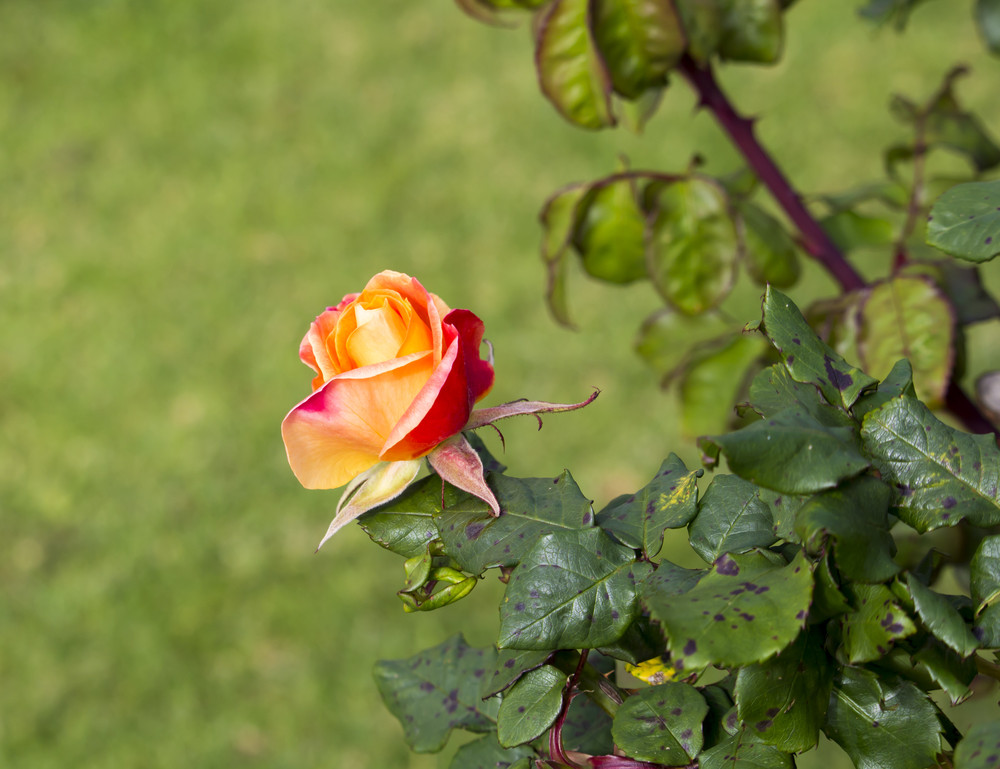
Black Spot is a disease that commonly strikes roses. The spots appear on the leaves, up to a half-inch across, with yellow margins.
If left unchecked, it can cause a rose bush to totally defoliate.
Once your rose bush is attacked by black spot fungus, its markings are there to stay until the marked leaves fall off and a new leaf is generated.
The fungus that causes them can be killed so as to not do any further damage to the foliage, but the marks will remain for some time.
Treating it starts with prevention, which includes adequate planting sites that get plenty of sunlight and circulation, prune and the use of resistant cultivars.
Mulch to prevent dirt and spores from being splashed up onto the plants.
Some people swear by a baking soda spray, which helps change the pH level on leaf surfaces, making it more difficult for black spot to infect the plants.
You can make this organic solution by mixing a couple tablespoons of baking soda with a gallon of water; spray both sides of the foliage.
Reapply weekly and repeat after any rain.
You can also use neem oil, which is known to help control many other rose pests as well. If black spot develops, destroy all dropped leaves and prunings to avoid spreading.
